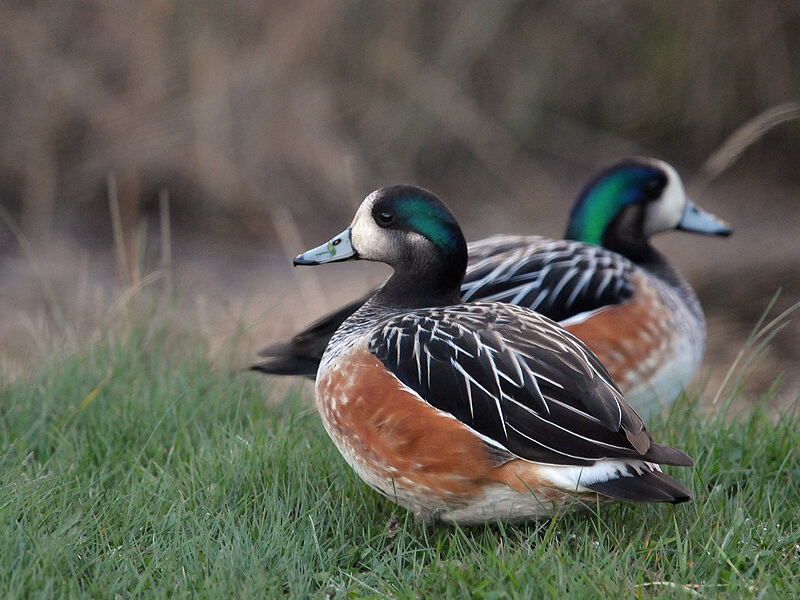Chiloé Wigeon

Scientific Name:
Mareca sibilatrix
Alternative Names:
Chiloé Wigeon, Southern Wigeon, Pato Overo
Measurements:
| Feature | Male | Female |
|---|---|---|
| Length | 46–56 cm (18–22 in) | 46–56 cm (18–22 in) |
| Weight | Around 800 g (28 oz) | Slightly lighter |
| Wingspan | 75–86 cm (30–34 in) | 75–86 cm (30–34 in) |
Status
Classified as Least Concern. Populations are stable and widespread in southern South America.
Identification
A medium-sized duck with a glossy green-blue cap, white cheeks and forehead, and dark brown eyes. The breast is barred black and white, and the body is grey and white. Males have rust-colored flanks, while females have lighter brown flanks. The bill is bluish-grey with a black tip, and the legs and feet are grey. Males are slightly brighter and heavier, but both sexes look quite similar.
Voice
Both sexes make a soft whistling sound. The call is a clear, three-part whistle. They often raise their head and chin when calling.
Diet
Feeds mostly on aquatic plants, grasses, and sometimes algae. Occasionally eats small aquatic insects. Uses its short bill to graze in shallow water and on grass.
Distribution
Native to southern South America. Found in Argentina, Chile, Uruguay, and the Falkland Islands. Migrates north to southeastern Brazil during winter. Occasional vagrants seen on sub-Antarctic islands.
Habitat
Lives on freshwater lakes, marshes, slow rivers, and shallow lagoons with grassy or reedy edges.
Breeding
Breeds from September to December. Nests are on the ground in grass or under bushes. The female lays 8–10 white or cream eggs. Incubation lasts about 24–25 days. Both parents care for the ducklings, but the male often leaves after they molt.
Wintering
Southern populations migrate north to warmer parts of Brazil and central South America during winter.
Conservation
Not at risk. Protected in parts of its range. Main threats are habitat loss and wetland drainage, but the species remains stable.
